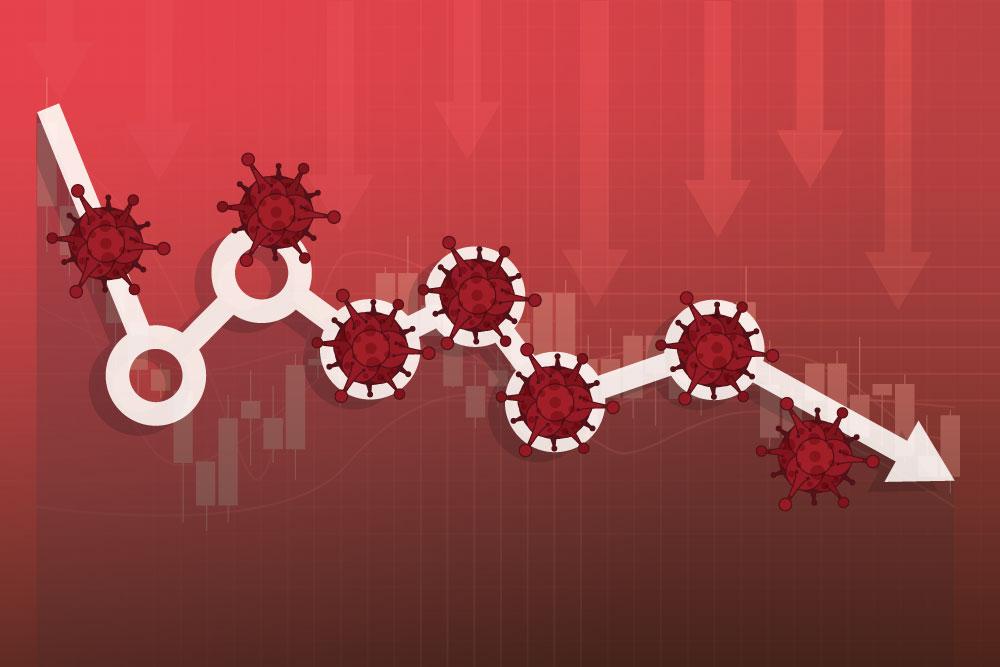
You are home, for at least a fortnight now. Some working, or at least pretending to. Expenses are lower. Bank balance has hardly moved since March salary got credited. Everything looks tidy, at least for the moment, though you do not know what to expect some time from here on. But what you are dead sure now, is about the time in your hand, which is aplenty. You are a V12 engine, with nothing to haul.
So, come 09:15 am, every day, you are in an unenviable position. You feel the urge and the confidence that you now have the resources to tame the market that has so far eluded you when you were busy with work.
Stock market, undoubtedly, presents you with abundant amounts of nervous action, at an unusual level especially now, with the potential of making as much money in a few minutes, as one would have witnessed in the week ending 27 March, which would have otherwise taken you a few years. But, the other side of the coin says, you are also likely to lose in a few minutes, what you might never make up in your life ahead, as it is a rarest of rare event that we are in now.
So, let us revisit a few investment themes for the sake of those at home, and
- Have a relook at SIPs.
Continuing SIPs blindly may hurt you. Here is why.
a. If your financial situation has turned for the worse, you should stop SIP; the rainy day may have arrived already. But if you feel indecisive about continuing SIPs, then you still have your wits around, and would do well to remember that you started this SIP in the first place, to get the better off such indecisive situation, and be unburdened about the challenge of making something out of the market irrespective of the trend; be it sideways, up or down. But now that we are here, let us acknowledge that these are not normal situations that the law of averages should be applied to, as we are over 30 percent below the record peaks despite a 1000 point rise in Nifty in the week ending 27th March. And hence you could consider altering the SIP amount to a lump sum equivalent to say 3x so that you catch the low prices more strongly than you would if you were to space it out on a monthly basis. Given the wild swings, you could also consider changing the timing of the SIP flows to weekly or to an appropriate frequency or date that you feel would best capture the lows.
b. If your stock portfolio consists of micro caps or companies with poor track record, then, consider stopping SIPs to those companies. Such companies are less likely to recover from the virus inflicted disruption. Instead divert them to front line companies which are more stable and re divert them to smaller cap opportunities when the market stabilizes.
2. Redraw your trading plan
a. Avoid Mondays, embrace Thursdays. Both, as far as possible; save exceptions. Monday is always an iffy day. The two day break drives a wedge into the traders’ sentiments. The weekend breaks the momentum, and there is always fresh news that needs to be priced in on Monday in the initial hours of the day, followed by repricing it as the day evolves, as traders doubt if they had over bid. So, if a safe trading approach involves avoiding Monday then the starting point would be how they close out on Friday. Obviously that doesn’t make Friday the villain though, but Friday always puts a cap on markets’ gains. So the best way to limit the damages, would be to ensure that you are at your aggressive best prior to Thursday’s close.
b. Wash your hands properly, eat right, and sleep at least 7 hours. Since you have a lot of time at hand, and given the fact that you feel relaxed being at home, your safety fences or measures that protect you in a normal work week, may not be up and the chances are that you might enter the market hurriedly, unprepared and expose yourself to a risk that you would otherwise not be. The three activities are the least that you could do to feel responsible and avoid taking a laissez-faire approach. And also the small matter of keeping your immunity at its best.
3. The 5th wave
a. Elliott wave is a very useful friend for the trend trader. Perhaps not as much, if one were to go by pure counting methods, as it gets too complex to be accurate or practical. But even the most novice of a trader would benefit if he were to appreciate the concept of waves in understanding the directional moves and corrections. The concept essentially says that every major move consists of 5 waves (3 impulse moves in the direction of the major move and 2 corrective moves in the opposite direction). That be the case, we can try if the impact of Corona virus can be mapped through Elliott wave. Its impact on financial markets have been massive anyway. As per Elliott Wave concept, the first wave always happens in a shroud of secrecy. Only a few participate initially, and a large section of people do not happen to spot it until well into the later stages of the move. This is what happened with China. While the world took a note of the virus in late January or February, the infection had already spread deep into Wuhan, China where the first case, as per some websites, was reported as early as 17th November 2019. So the period from November through January 2020, can be construed as the first wave. The second wave, which is a cooling down period, or a correction in market terms, tries to disbelieve what just happened through the first wave, doubting the very possibility of what could unfold, as foretold by the first wave. This is what happened in Kerala through late January or early February, when the first case was reported, and quarantined and treated to be infection free. The third wave is a confirmation of the first wave, the difference being the size of the third wave being huge, in comparison, as the word goes out, and the event that had unfolded in secrecy is now out in the open. This is what happened, or is happening since late February or early March, as more and more countries across the globe got infected on a massive scale, Iran and Italy initially, and later to the rest of Europe, US, as well as other populous nations including India. So, the community stage, when the infection is not via foreigners anymore, but by the locals themselves is a powerful stage, and sits well with the concept of the third wave in financial markets, in terms of the size, power and the awe that it leaves on the participant. By the same yardstick, as and when countries across globe come out of their quarantine periods, and heave a sigh of relief, the fourth wave will start, witnessing a decline in infections, something akin to what we have witnessed in China already. The larger wave count, however, is not complete, until we see a fifth wave, a relapse, or a revival of infection spree, and hopefully a truncated one that does not surpass the infection rates of the third wave.
b. So, where are we, on a global scale? Perhaps somewhere into third wave, which is already proving long and ravaging. The fourth and fifth are yet to unfold.









Very thoughtful.